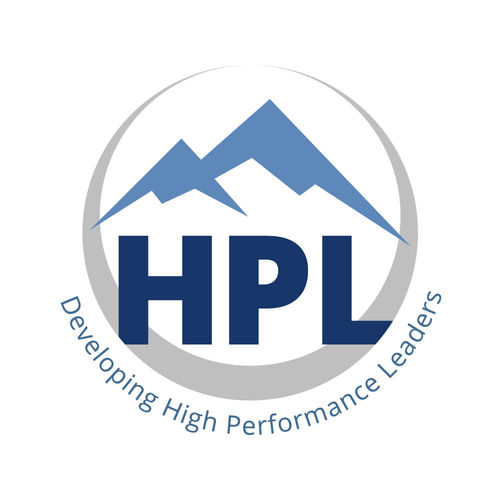
Thursday, December 1, 2022 |
||
|
Summary
Leadership development is not just about taking a course or reading the latest business book. Although they are essential components of leadership development, more is needed to result in a better return on investment and a more sustained impact for the leader. Effective leadership development combines concept learning opportunities with immediate application in the real world, integrated with internal mentoring to align expectations and build organizational culture and coaching to develop leader confidence quickly.
Should you be concerned about leadership development? Yes, from at least two points of view. First, is leadership development a priority in your organization or just when there is time? Second, is there a structured and integrated leadership development approach and methodology, or is it a free for all? If leadership development in your organization happens just when there is time or is a free for all, then perhaps it’s cause for concern and a call to action to be more intentional about your leadership development. Is there a crisis? Yes, because there are more leadership positions opening than organizations are able to fill due to a void of prepared and experienced leaders.
An effective leadership development program should contain these 4 components:
Concerned?
Are you concerned about your leadership development or that of those within your organization?
Recent retirement trends are leaving a significant leadership gap in many organizations. At the same time, many up-and-coming leaders are concerned that they are not getting the leadership development they need to be successful leaders or to be prepared for these opening positions.
In addition, although leadership development programs are available in abundance, many are not aligned with the organization’s culture, don’t help the leaders apply what they learn within their day-to-day responsibilities, and, as a result, lack sustained impact on the leader and the organization.
So, if you are not concerned, you should be!
The Scary Truth
A shocking 77%* of organizations report that leadership within their teams is lacking. 83%* say leadership development at all levels of their organization is a priority. However, the scary part is that less than 5%* of companies have implemented leadership development at all levels!
“Less than 5%* of companies have implemented leadership development at all levels!
With senior-level and the most experienced leaders retiring from the workforce in high numbers, 50%* of companies state they lack the leadership talent they need. 47%* predict a shortage of leadership skills in the near future!
“47%* predict a shortage of leadership skills in the near future!
Although this needs to be a concern for organizations and senior leaders, this is an excellent opportunity for new and upcoming leaders! Although we don't need another crisis, we are facing a leadership development crisis, nonetheless.
How We Got Here
The result of slowed population growth in the decades following the "baby boomers" is that there is a smaller leadership pool to draw upon for these needed leaders. It also means that leaders are being promoted at a younger age and advancing through the leadership ranks faster and sooner than their predecessors. This in itself is not necessarily a concern or a bad thing. However, these developing leaders must have the skillsets and knowledge to be effective leaders, gain influence, and drive positive impact across their organizations. Unlike their predecessors, many of these leaders typically desire and need more mentoring and coaching than they currently receive to gain experience and increase their confidence.
There is a path forward by having an integrated and intentional approach to leadership development.
4 Leadership Development Components
4 critical components must be integrated and intentional to result in effective leadership development. Those 4 components are cultural alignment, applicable skills & tools, internal mentorship, and external coaching. Let’s take a closer look at each component.
1 Cultural Alignment
Any leadership development program must be aligned with the organization's culture, meaning that the program reinforces the company’s values, methodology and approach to leadership, as opposed to being abstract to or does not emphasize these attributes in the leadership development program. For example, if the organization’s culture is one of continuous improvement through team member engagement, aligning to a leadership development program that applies this thinking and provides concepts and practical skills that can be directly used in this culture is critical.
Unlike specific skills training such as accounting or excel macro coding, for example, leadership development programs need to be aligned to the culture because the demonstrated leadership either positively or negatively impacts the realization of the organization’s vision, mission, and values through the engagement of their team members.
In addition, leadership development programs should have progressive and aligned development for leaders at all levels of the organization. Progressive in the sense of continued development building on previously developed skills to prepare them for advancing their career and being capable and confident to take on a larger scope of responsibilities. In doing so, a common leadership language and approach is created throughout the organization providing stability and consistent leadership. This intentionality then provides a known and defined career development path for leaders throughout all levels of the organization. As a result, defined leadership development can be easily integrated with organizational performance reviews or talent development programs that provide clear leadership development paths and a structured approach versus haphazard or random.
2 Applicable Skills & Tools
Leadership development programs no doubt provide great insights into proven management theory; however, organizations and leaders need and want practical concepts that they can apply to improve leadership and have a positive impact immediately. A failure of many leadership development programs is that there is too much focus on interesting management theories but often lack how to execute or apply these theories in the workplace. This is a significant cause of leaders returning from great-sounding leadership development programs, but little impact is observed or sustained long term.
Scrutiny of the leadership development program curriculum is an essential first step. Ensuring that the topics covered are very closely aligned with the practical skills necessary for the intended leaders to be successful and have an impact is essential. The upskills learned must be immediately applied within their current responsibilities or in the near term. Practice makes perfect, as the saying goes. In this case, it’s more about creating the desired leadership approach and habits.
“Practice makes perfect!”
As important as the curriculum is, it is equally essential that the leadership development program is designed to provide the leader with immersive learning opportunities. In other words, real examples, case studies, practical exercises, and immediate application through work-related assignments and projects. This approach again helps the leaders apply what they have learned and realize immediate benefits, which provides a reward and pull to continue to use them. It then causes a shift from learning to doing. Most people learn more effectively by doing.
3 Internal Mentorship
Another common failure mode in leadership development is that it should be discussed again after the leader obtains approval to attend or is asked to attend. Often this is not the case. Leaders are left with a feeling of “so what” and wonder if they wasted their time. The organization risks a poor return on investment as there is no check and balance to ensure a positive impact for the leader and the organization, let alone if the leader even attended!
Leadership development programs that include an internal mentor develop relationships, improve the alignment of cultural values throughout the leadership levels, sustain a common leadership language and approach, and improve impact and sustained results.
Mentorships accelerate the leader’s application and use of the skills and tools through encouragement and reinforcement of use within the organization. The mentor’s experience can assist the leader in overcoming barriers and challenges they face with a mutual understanding of the circumstances and environment.
An added benefit of an internal mentorship program is that the mentor also learns significantly from the experience. Discussing the skills and tools with the leader refreshes and reinforces the approaches with the mentor and deepens their understanding simultaneously. Mentoring is also an enriching experience for the mentor, driving higher engagement and satisfaction levels.
4 External Coaching
Additional coaching from an experienced leadership coach increases the leader’s self-awareness and builds confidence.
Today’s upcoming leaders need and desire more coaching than they currently receive. Many leaders state they are not getting enough coaching from within their organizations. There are several benefits of an external coach.
In our coaching, we are experiencing that leaders need to bounce ideas and thoughts off of someone, require some assurance that their approach is on the right path, and seek a safe environment to do so.
Leaders are running at an incredible pace these days. Many are not giving themselves the time to adequately think through their challenges and develop an intentional approach to moving forward. The feedback we consistently hear is that coaching provides the leader with a structure that almost forces them to stop and think at a deeper level before acting. Without structured coaching, they tend to fire-ready-aim more often than not. In other words, their leadership or decision-making is not very intentional.
“Fire --> Ready --> Aim
Many leaders lack self-confidence in themselves and are concerned about making a mistake. We find that the leaders are on the right track but need some assurance. External coaching can accelerate the leader’s confidence building by helping the leader think through what options they have and which are better than others. Confidence is built because the leaders develop the options and make the decisions on their own. The coach challenges them with questioning to help along the process.
External coaching provides the leader with a safe environment that is confidential and disconnected from the organization. Coaching conversations with an external coach are confidential and not shared with anyone. This allows the leader to be vulnerable and self-critical without fear of repercussions. Being able and comfortable with being vulnerable, leaders can more readily identify their concerns and barriers and develop approaches that work for them to face and overcome them quickly.
Conclusion
There is a massive void in leadership right in front of us. It’s already here!
Individual leaders must invest more time and effort in their development. Take the lead, don’t wait for someone else or their organization to do so. “I’m too busy right now” is a common excuse. Guess what? You will always be too busy. No one should care more about your leadership development than you! No one! If you do not invest in your development, you will not advance or achieve your full capability. Others will find time, and you will be left behind. Achieve your career aspirations and grow to your full potential. Take action today to intentionally determine your leadership development next steps!
Organizations are facing a significant challenge. Leaders don’t just appear, and you can’t just hire them. Not anymore. You must be growing and developing them. Leadership development is a significant investment in all forms of resources. Take action today by creating a leadership development program approach that includes the 4 critical components discussed!
* 25 Surprising Leadership Statistics (2022)
|
||
|
||
|
||
|
||
|

|
|
HPL Administrator 7 November 29, 2024 |

|
|
Sabrina Sommerville 1 August 15, 2024 |

|
|
Glenn Sommerville 45 June 6, 2024 |